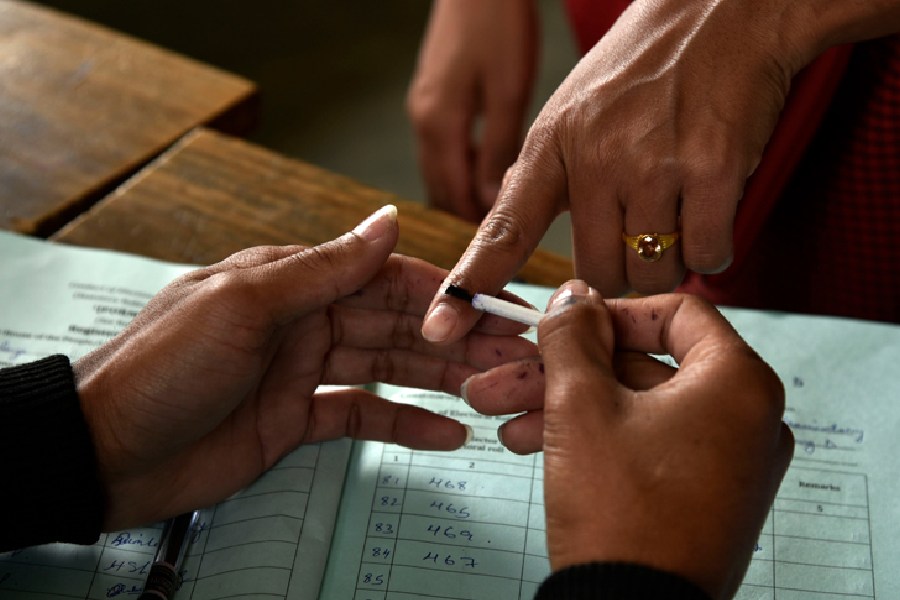 |
| Juicy bite: A Jackfruit tree in Salt Lake |
The Jackfruit is a handsome evergreen tree that originated in the humid forests of the Western Ghats but is now abundant in south east Asia, Nepal and Sri Lanka. The national fruit of Bangladesh, Jackfruit is also widely grown by residents of Salt Lake.
The plant is a species of tree in the Artocarpus genus of the mulberry family. This tall tree with short trunk, glossy leaves and dense crown reaches up to a height of 20m.
Cultivation
Studies reveal that the Jackfruit was first cultivated in India about 3,000 to 6,000 years ago. Today the greatest production of Jackfruit in India is in Assam, and then in Bihar and Kerala, where it is a common sight in every home.
Jackfruit can be grown on a wide variety of soils but it grows best in rich, deep alluvial and well-drained soil. It likes grows warm and humid climate. Jackfruit trees need a spacing of about 10m between tree and tree. It requires plenty of water but is sensitive to stagnation of water in the soil. It also cannot tolerate cold and frost.
June to August is the ideal time for planting Jackfruits. The tap root system along with seedlings should not be distributed while planting. The plants should be protected from cattle because its leaves are favourite munchies for them. The plants should be trained from the beginning by removing lower branches.
Leaves: Leaves of this tree are dark glossy green on top and paler underneath. They are thick, leathery, shining elliptic or oblong of 10 to 20cm length and the leaf-stalk is generally 1.2 to 2.5cm long.
Flowers: Flowers are generally yellowish green. Male and female flowers are borne on the same tree. Male flowers are small and profuse in clusters emerging from new branches and do not develop into fruits. Female flowers are larger than the males, densely crowded on old branches, borne on short stalks on main branches and mostly on the trunk. Flowers generally appear from December- end to March.
Fruits: The Jackfruit is the largest tree-borne fruit in the world, reaching as much as 40kg in weight, 90cm in length and 50cm in diameter. Sometimes fruits from the underground parts of the tree are seen emerging out of the soil. Huge Jackfruits up to 4-ft in length are sometimes seen in Kerala.
Being cross-pollinated and propagated from seeds, the type of fruits vary in terms of density of spines, rind, size, shape, quality and period of maturity. Jackfruits ripen during the rains between July and August and is aromatic, sweet and fleshy.
 |
| Wood of Jackfruit tree is used for the production of Mridangam barrels |
Among local selections, one that is rose-scented is called Gulabi and another that has a flavour like Champak is called Champa. There are two broad groups of ripe Jackfruits - one with a slightly hard inner flesh and the other with soft inner flesh, that almost dissolves. The Singapore or Ceylon Jack introduced from Ceylon is highly precious. Sometimes it produces light off-season crop between September and December.
Jackfruits of NJT collection from Faridabad have large fruits of excellent quality with bulbs that have low fibre. These are suitable for table purposes where as NJC collections have small to medium-sized fruits with thin rind and soft flesh that are suitable for culinary purposes. Apart from these there is another type of Jackfruit called Rudrakshi. Its fruit is smaller and of a rather poor quality.
A rich source of Vitamin A, C and minerals, Jackfruits also have carbohydrates. Tender Jackfruits are popularly used as vegetables. The young fruit, called Acher, is cooked with spices and is said to be a substitute of meat curries. Ripe Jackfruit is sweet and can be used to prepare a variety of dishes like custards and cakes. Pickles are its preserved delicacies. Nectar is prepared from its pulp.
Seeds from ripe fruits are edible and prepared by boiling and they have a milky and sweet taste. Roasted, salted seeds are also eaten.
Propagation
The Jackfruit is commonly propagated through seeds. Seeds extracted from fully matured fruits are washed in water to remove the slimy coating. Seeds should be sown immediately after extraction since they loose their viability during storage. Germination is improved by soaking seeds in clean water for 24 hours. Sow the seeds in line, 30cm apart, in a nursery bed with soil rich in organic manure.
The seedbed should be shaded partially from direct sunlight in order to protect emerging seedlings. Sometimes vegetative propagation by grafting air layering and budding is also adopted. Seedling trees start bearing from the seventh or eighth year onwards while the grafted ones from the fourth or fifth year. The Singapore variety starts yielding earlier from the third or fourth year of planting.
In its peak bearing stage, that is at around 15 or 16 years, Jackfruit trees bears up to 250 fruits annually. However this may vary depending on the type of varieties. The weight of fruits also varies depending on variety. The Jackfruit plants need adequate fertilisation for regular and good cropping.
Jackfruit wood is widely used to manufacture furniture, door and window shutters and roof frames, since it is rarely attacked by white ants. The wood of this tree is also used for the production of barrels of the musical instrument Mridangam. The tree is often used as a shade tree in coffee plantations in South India.










